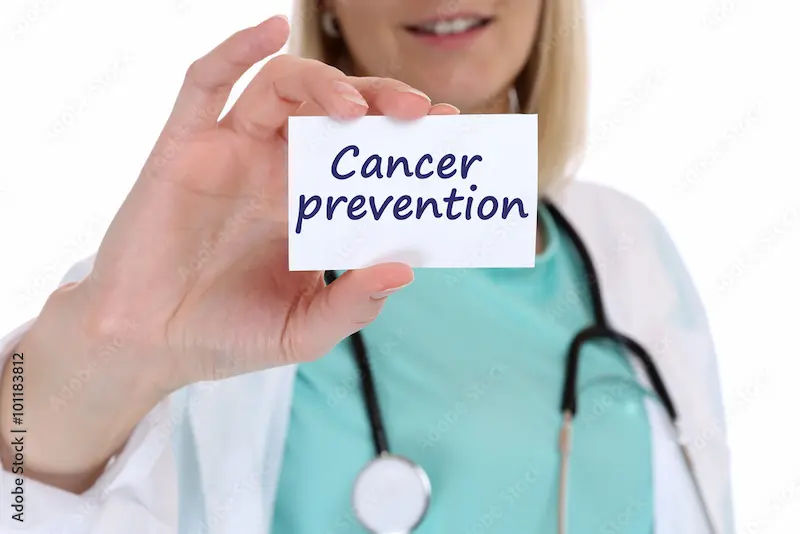Guide to Cancer: How Earlier Diagnosis Leads to Better Cures
Discover how early cancer detection improves treatment outcomes. Learn about warning signs, diagnostics, modern therapies, and prevention for better chances of a cure.
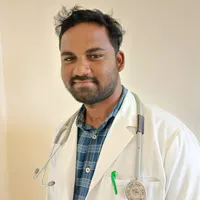
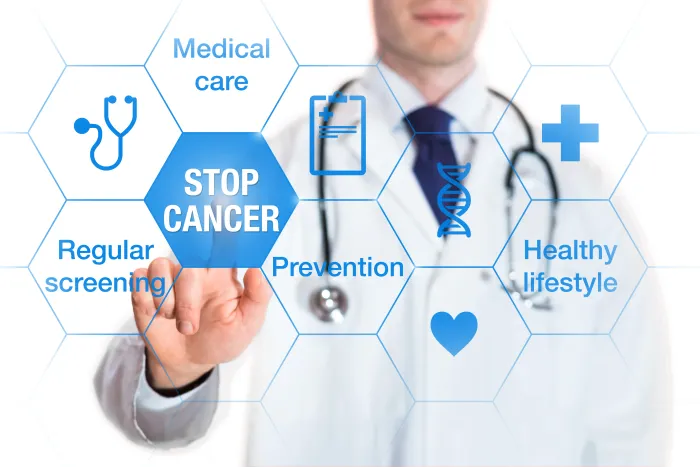
Introduction
Hearing the word "cancer" can be overwhelming. It often brings a wave of fear and uncertainty. But in the landscape of modern medicine, one truth stands out with unwavering clarity: earlier diagnosis dramatically improves the chances of a successful cure. This guide is designed to demystify cancer, not to frighten you. We will walk you through the entire journey—from understanding what cancer actually is, to recognising its early whispers, through the steps of diagnosis, and into the powerful array of modern treatments. The central message is one of empowerment. Knowledge is your first line of defence. By knowing what to look for and understanding the importance of timely action, you take control of your health. Whether you're concerned for yourself or a loved one, this article will provide a clear, comprehensive roadmap. We'll explore how early cancer detection can transform outcomes and how today's treatments are more targeted and effective than ever before. If you experience persistent symptoms, consulting a doctor online with Apollo24|7 can be a quick and confidential first step to address your concerns.
Understanding Cancer: More Than Just a Single Disease
Cancer is not one illness but a collection of related diseases. At its core, it involves the uncontrolled division of abnormal cells in the body. Normally, our cells grow, divide, and die in an orderly fashion. Cancer begins when this process breaks down, leading to the formation of a mass called a tumour.
The Basic Biology: What Goes Wrong in Our Cells?
Our DNA contains genes that instruct cells on how to function. Sometimes, changes or mutations in these genes can occur due to factors like aging, lifestyle, or environmental triggers. These mutations can tell a cell to:
1. Multiply uncontrollably, ignoring signals to stop.
2. Avoid natural cell death (apoptosis), allowing abnormal cells to survive.
3. Invade nearby tissues and spread to other parts of the body.
Benign vs. Malignant Tumours: What's the Difference?
Not all tumours are cancerous. Here’s how benign and malignant tumours differ:
• Benign Tumours do not spread to other parts of the body. They can often be removed and usually don't grow back. However, if they press on vital organs or nerves, they can still cause serious problems.
• Malignant Tumours are cancerous. Their cells can invade surrounding tissues and break away to travel through the bloodstream or lymphatic system to form new tumours elsewhere—a process called metastasis. This is what makes cancer diagnosis so critical; catching it before it spreads is key.
Consult an Oncologist for the best advice
The Power of Early Detection: Why Timing is Everything
The stage at which cancer is discovered is the single most significant factor in determining the prognosis and available treatment options.
The Stages of Cancer Explained (0-IV)
Doctors use staging to describe the severity of cancer, typically from 0 to IV.
• Stage 0: Abnormal cells are present but haven't spread. This is often called "carcinoma in situ" and is highly curable.
• Stages I & II: Cancer is localised to the primary organ. The tumour may be larger in Stage II, but it has not spread to lymph nodes or distant sites. These stages offer the best chance for a better cure.
• Stage III: The cancer is locally advanced and may have spread to nearby lymph nodes but not to distant organs.
• Stage IV: The cancer has metastasized to other parts of the body. Treatment at this stage often focuses on controlling growth and relieving symptoms.
How Early Detection Radically Improves Survival Rates
The statistics are compelling. For many common cancers, the 5-year survival rate for localised disease (Stages I and II) is dramatically higher than for cancer that has spread.
• Breast Cancer: The 5-year survival rate for localised breast cancer is over 99%. For regional spread, it's 86%, and for distant spread, it's 31% (American Cancer Society).
• Colon Cancer: Localised colon cancer has a 91% 5-year survival rate, compared to 14% for distant spread.
This underscores why screening programs (like mammograms and colonoscopies) and paying attention to early signs of cancer are life-saving practices.
Know Your Body: Recognising the Early Warning Signs
Your body often sends signals when something is wrong. Listening to these signals is the first step toward an earlier diagnosis.
General Symptoms You Should Never Ignore
The American Cancer Society uses the acronym CAUTION to highlight general warning signs:
• Change in bowel or bladder habits.
• A sore that does not heal.
• Unusual bleeding or discharge.
• Thickening or lump in the breast or elsewhere.
• Indigestion or difficulty swallowing.
• Obvious change in a wart or mole.
• Nagging cough or hoarseness.
Other general symptoms include unexplained weight loss, persistent fatigue, and fever.
Specific Symptoms Linked to Common Cancers
While the above are general, specific cancers have their own signals:
• Lung Cancer: A cough that doesn't go away, coughing up blood, chest pain.
• Skin Cancer: A mole that changes in size, shape, or colour, or a new growth.
• Prostate Cancer: Difficulty urinating, blood in the urine or semen.
If symptoms persist beyond two weeks, consult a doctor online with Apollo24|7 for further evaluation.
The Diagnostic Pathway: From Suspicion to Certainty
If a symptom or screening test suggests cancer, your doctor will follow a structured path to a definitive cancer diagnosis.
Step 1: Consultation and Physical Examination
This involves a detailed discussion of your medical history, family history, and symptoms, followed by a physical exam to check for any lumps or abnormalities.
Step 2: Imaging Tests (CT, MRI, PET Scans)
These tests create pictures of the inside of your body to locate a tumour and see if it has spread.
• CT Scan: Provides detailed cross-sectional images.
• MRI: Uses magnetic fields to create detailed images, especially of soft tissues.
• PET Scan: Can show metabolic activity, helping to distinguish between benign and malignant growths and identify metastasis.
Step 3: Laboratory Tests and Biopsies (The Gold Standard)
While imaging suggests cancer, a biopsy is the only way to confirm it. A sample of tissue is removed and examined under a microscope by a pathologist.
Understanding Your Biopsy Report and Pathology
Your pathology report is crucial. It will confirm if cancer is present, identify the cancer type, its grade (how abnormal the cells look), and other molecular features. This information is essential for creating a personalised treatment plan. Apollo24|7 offers convenient home collection for tests like CBC or tumour markers that can support the diagnostic process.
Get Your Health Assessed
The Modern Arsenal of Cancer Treatments
The goal of treatment can be curative, control-oriented, or palliative (relieving symptoms). Today's options are highly sophisticated.
Localised Treatments: Surgery and Radiation Therapy
These treatments target a specific area.
• Surgery: The physical removal of the tumour and some surrounding healthy tissue.
• Radiation Therapy: Uses high-energy particles to destroy cancer cells in a targeted area.
Systemic Treatments: Chemotherapy, Hormone, and Targeted Therapy
These treatments travel throughout the body via the bloodstream.
• Chemotherapy: Uses powerful drugs to kill fast-dividing cells.
• Hormone Therapy: Blocks hormones that fuel certain cancers (e.g., breast, prostate).
• Targeted Therapy: Drugs that target specific molecules involved in cancer growth, causing less harm to normal cells.
The Frontier of Treatment: Immunotherapy and Precision Medicine
This represents the cutting edge of cancer cure research.
• Immunotherapy: Boosts the patient's own immune system to recognise and destroy cancer cells.
• Precision Medicine: Treatment is tailored based on the genetic profile of the patient's tumour, leading to more effective and less toxic therapies.
Life After Diagnosis: Survivorship and Supportive Care
A cancer diagnosis begins a new chapter: survivorship. This involves managing long-term side effects, addressing emotional health, and maintaining a healthy lifestyle to prevent recurrence. Support groups, nutritional counselling, and physical therapy are vital components of comprehensive care.
Prevention is the Best Cure: Reducing Your Risk
While not all cancers are preventable, up to 50% of cancers can be prevented by healthy lifestyle choices (WHO).
1. Avoid Tobacco: The single largest preventable cause of cancer.
2. Maintain a Healthy Weight & Diet: Eat plenty of fruits, vegetables, and whole grains. Limit processed meats.
3. Be Physically Active.
4. Protect Your Skin from the Sun.
5. Get Vaccinated (e.g., HPV vaccine prevents cervical cancer).
6. Attend Recommended Screenings based on your age and risk factors.
Conclusion
The journey through cancer awareness, diagnosis, and treatment is complex, but it is a journey where knowledge truly is power. The overarching theme of modern oncology is clear: finding cancer early makes it easier to treat and vastly improves the likelihood of a better cure. This guide has equipped you with an understanding of the warning signs, the diagnostic process, and the advanced treatments available today. Remember, you are an active participant in your health. Be proactive about screenings, listen to your body's signals, and seek timely medical advice. If you have concerns, taking that first step to speak with a healthcare professional can make all the difference. If your condition does not improve after trying lifestyle methods, or if you have persistent symptoms, booking a physical visit to a doctor with Apollo24|7 ensures you get the expert care you need.
Consult an Oncologist for the best advice
Consult an Oncologist for the best advice

Dr. Sanchayan Mandal
Medical Oncologist
17 Years • MBBS, DNB Raditherapy, DrNB Medical Oncology
East Midnapore
VIVEKANANDA SEBA SADAN, East Midnapore

Dr.sanchayan Mandal
Medical Oncologist
17 Years • MBBS, DrNB( MEDICAL ONCOLOGY), DNB (RADIOTHERAPY),ECMO. PDCR. ASCO
Kolkata
Dr. Sanchayan Mandal Oncology Clinic, Kolkata

Dr Gowshikk Rajkumar
Oncologist
10 Years • MBBS, DMRT, DNB in Radiation oncology
Bengaluru
Apollo Clinic, JP nagar, Bengaluru
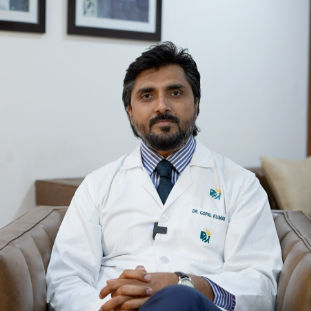
Dr. Gopal Kumar
Head, Neck and Thyroid Cancer Surgeon
15 Years • MBBS, MS , FARHNS ( Seoul, South Korea ), FGOLF ( MSKCC, New York )
Delhi
Apollo Hospitals Indraprastha, Delhi
(25+ Patients)
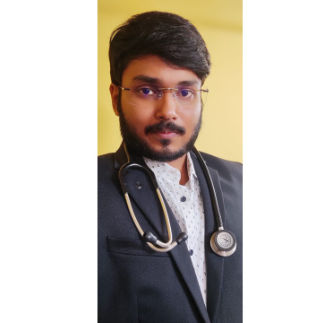
Dr. Rupam Manna
Radiation Specialist Oncologist
4 Years • MBBS MD(RADIO THERAPY)
Barasat
Diab-Eat-Ease, Barasat
Consult an Oncologist for the best advice

Dr. Sanchayan Mandal
Medical Oncologist
17 Years • MBBS, DNB Raditherapy, DrNB Medical Oncology
East Midnapore
VIVEKANANDA SEBA SADAN, East Midnapore

Dr.sanchayan Mandal
Medical Oncologist
17 Years • MBBS, DrNB( MEDICAL ONCOLOGY), DNB (RADIOTHERAPY),ECMO. PDCR. ASCO
Kolkata
Dr. Sanchayan Mandal Oncology Clinic, Kolkata

Dr Gowshikk Rajkumar
Oncologist
10 Years • MBBS, DMRT, DNB in Radiation oncology
Bengaluru
Apollo Clinic, JP nagar, Bengaluru

Dr. Gopal Kumar
Head, Neck and Thyroid Cancer Surgeon
15 Years • MBBS, MS , FARHNS ( Seoul, South Korea ), FGOLF ( MSKCC, New York )
Delhi
Apollo Hospitals Indraprastha, Delhi
(25+ Patients)

Dr. Rupam Manna
Radiation Specialist Oncologist
4 Years • MBBS MD(RADIO THERAPY)
Barasat
Diab-Eat-Ease, Barasat
More articles from Cancer Screening Preventive
Frequently Asked Questions
1. What are the most common early signs of cancer?
The most common early signs can be remembered with the CAUTION acronym: Changes in bowel/bladder habits, A sore that doesn't heal, Unusual bleeding, Thickening or lump, Indigestion, Obvious change in a mole, and Nagging cough. However, many early cancers have no symptoms, which is why screening is vital.
2. How can I get screened for cancer if I have no symptoms?
Talk to your doctor about your personal risk factors (age, family history, lifestyle). They can recommend appropriate screening tests, such as a mammogram for breast cancer, a colonoscopy for colorectal cancer, or a Pap test for cervical cancer.
3. What is the difference between a benign and malignant tumour?
A benign tumour is not cancerous. It grows slowly and does not invade other tissues or spread. A malignant tumour is cancerous. Its cells can invade nearby tissue and spread (metastasize) to other parts of the body.
4. Are all cancers curable if caught early?
While not all cancers are curable, the vast majority are highly treatable when detected early. The goal of early detection is to remove or destroy the cancer before it has a chance to spread, which offers the best chance for a complete recovery.
5. What are the latest advancements in cancer treatment?
The most exciting advancements are in immunotherapy, which harnesses the body's immune system to fight cancer, and precision medicine, where treatments are tailored to the specific genetic mutations of a patient's tumour, leading to more effective and personalised care.

